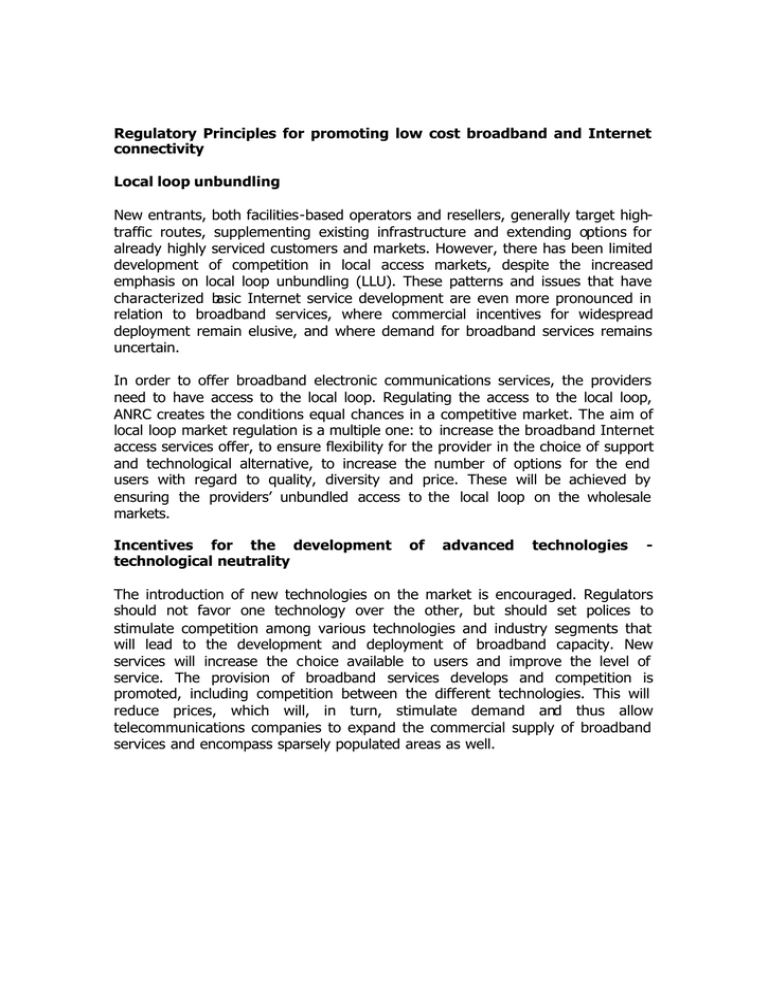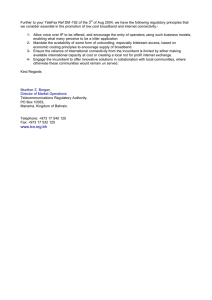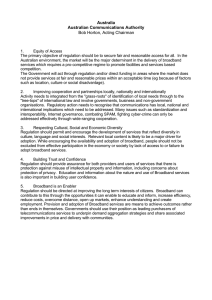Regulatory Principles for promoting low cost broadband and Internet connectivity
advertisement

Regulatory Principles for promoting low cost broadband and Internet connectivity Local loop unbundling New entrants, both facilities-based operators and resellers, generally target hightraffic routes, supplementing existing infrastructure and extending options for already highly serviced customers and markets. However, there has been limited development of competition in local access markets, despite the increased emphasis on local loop unbundling (LLU). These patterns and issues that have characterized basic Internet service development are even more pronounced in relation to broadband services, where commercial incentives for widespread deployment remain elusive, and where demand for broadband services remains uncertain. In order to offer broadband electronic communications services, the providers need to have access to the local loop. Regulating the access to the local loop, ANRC creates the conditions equal chances in a competitive market. The aim of local loop market regulation is a multiple one: to increase the broadband Internet access services offer, to ensure flexibility for the provider in the choice of support and technological alternative, to increase the number of options for the end users with regard to quality, diversity and price. These will be achieved by ensuring the providers’ unbundled access to the local loop on the wholesale markets. Incentives for the development technological neutrality of advanced technologies - The introduction of new technologies on the market is encouraged. Regulators should not favor one technology over the other, but should set polices to stimulate competition among various technologies and industry segments that will lead to the development and deployment of broadband capacity. New services will increase the choice available to users and improve the level of service. The provision of broadband services develops and competition is promoted, including competition between the different technologies. This will reduce prices, which will, in turn, stimulate demand and thus allow telecommunications companies to expand the commercial supply of broadband services and encompass sparsely populated areas as well.


